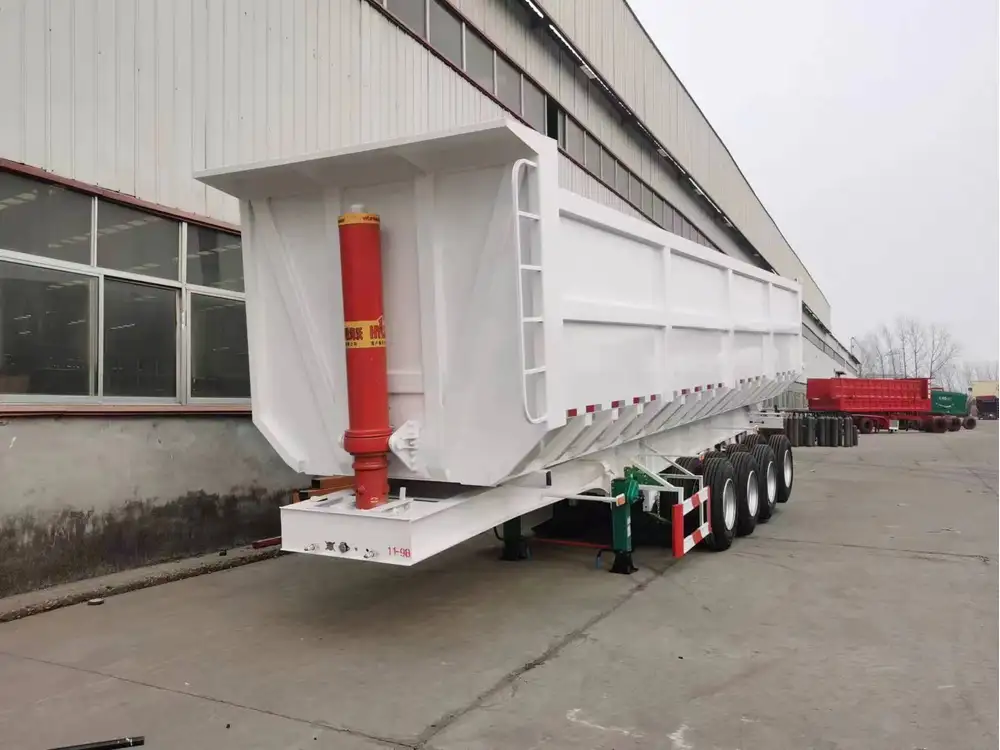When it comes to transporting goods, understanding the capacity of semi-trailers is paramount for logistics companies, freight brokers, and manufacturers alike. One critical question arises frequently: How many pallets can a semi trailer hold? This query touches upon various aspects of trailer specifications, pallet dimensions, and load configurations. In this guide, we dissect these components methodically to provide a clear and comprehensive understanding.
1. Understanding Semi-Trailer Dimensions
Semi-trailers come in different sizes and types, and each type has specific dimensions that influence its cargo capacity. The most common semi-trailer types relevant for pallet transport include:
| Trailer Type | Length | Width | Height |
|---|---|---|---|
| Standard 53-foot Trailer | 53 feet (16.15 m) | 8.5 feet (2.59 m) | 13.5 feet (4.1 m) |
| 40-foot Container | 40 feet (12.19 m) | 8 feet (2.44 m) | 8.5 feet (2.59 m) |
| 48-foot Trailer | 48 feet (14.63 m) | 8.5 feet (2.59 m) | 13.5 feet (4.1 m) |
1.1 Standard Dimensions of Pallets
Pallets also come in varying sizes, but the most common ones are the Euro Pallet (1200mm x 800mm) and the U.S. Pallet (48 inches x 40 inches). The dimensions significantly affect the number of pallets that can be loaded onto a semi-trailer:
| Pallet Type | Length | Width | Area |
|---|---|---|---|
| Euro Pallet | 47.2 inches (120 cm) | 31.5 inches (80 cm) | 15.5 sq. ft. (1.44 m²) |
| U.S. Pallet | 48 inches (121.9 cm) | 40 inches (101.6 cm) | 13.33 sq. ft. (1.23 m²) |

2. Calculating Pallet Capacity
To ascertain how many pallets can fit into a semi-trailer, a few calculations are necessary. Given a standard 53-foot trailer, we need to consider both length and width, along with pallet size.
2.1 Pallet Width and Length Configuration
Loading U.S. Pallets
Length Orientation:
- Pallet Width: 48 inches (4 feet)
- Number of Pallets: (53 feet × 12 inches) / 48 inches = 13.25 (approximately 13)
Width Orientation:
- Pallet Length: 40 inches (3.33 feet)
- Number of Pallets: (102 inches wide) / 40 inches = 2.55 (approximately 2)
Total Capacity (Length + Width orientation): 13 pallets x 2 pallets = 26 U.S. pallets

Loading Euro Pallets
Length Orientation:
- Pallet Width: 31.5 inches (2.63 feet)
- Number of Pallets: (53 feet × 12 inches) / 31.5 inches = 20.14 (approximately 20)
Width Orientation:
- Pallet Length: 47.2 inches (3.93 feet)
- Number of Pallets: (102 inches wide) / 47.2 inches = 2.16 (approximately 2)
Total Capacity (Length + Width orientation): 20 pallets x 2 pallets = 40 Euro pallets
2.2 Weight Considerations
It isn’t just about fitting pallets into a trailer; weight limits are equally crucial. A standard 53-foot trailer typically has a maximum payload capacity of 45,000 pounds. Thus, the weight of the pallets and their cargo should not exceed this limit.
For instance, if a U.S. pallet carries 2,500 pounds of goods, the total would be:
- With 26 pallets: 26 x 2,500 = 65,000 pounds (Exceeds weight limit)
Therefore, to stay within the legal limits, you can only fulfill a portion of the total pallets based on the weight distribution.
3. Types of Loads and Their Impact on Capacity

3.1 Single Tier vs. Double Tier Stacking
The method of stacking pallets affects capacity significantly. While single-tier stacking is straightforward, double-tier stacking allows for utilization of vertical space in the trailer.
| Load Configuration | Pallets |
|---|---|
| Single Tier | 26 U.S. pallets / 40 Euro pallets |
| Double Tier | 52 U.S. pallets / 80 Euro pallets |
Note that double-tier stacking requires considerations of weight distribution and safety regulations to avoid damage or accidents during transit.
3.2 Types of Goods
The type of goods carried also determines how many pallets can realistically fit into a trailer. For example, fragile items may need more space to prevent damage, thereby reducing the number of pallets transported.
4. Regulations and Compliance
Understanding the regulations governing semi-trailer loads is essential for compliance and avoiding hefty fines. The following points are critical:
- Weight Limits: Federal law typically caps the total weight at approximately 80,000 pounds.
- Height Restrictions: Load heights must not exceed 13.5 feet to comply with clearance regulations.
- Load Securement: Pallets must be secured adequately using straps or nets to prevent shifting during transport.

5. The Importance of Accurate Calculations
Ineffective load calculations can lead to various issues, including:
- Increased Transport Costs: Overloading leads to penalties and additional fees.
- Operational Delays: Failure to comply with regulations may cause delays at weigh stations.
- Safety Hazards: Incorrect loading can lead to accidents, harming both goods and personnel.
6. Conclusion
In summary, understanding how many pallets can fit on a semi-trailer involves a multifaceted approach that considers trailer dimensions, pallet size and orientation, weight capacities, load types, and regulatory compliance. Whether you are a manufacturer, freight broker, or logistics coordinator, accurate calculations and strategic planning are vital for optimizing freight transport and ensuring your operations run smoothly.
With a semi-trailer capacity that may vary significantly based on the aforementioned factors, it is imperative to familiarize oneself with the specifics of the vehicle in use and the nature of the shipments being transported. By doing so, businesses can enhance efficiency, reduce costs, and ultimately, improve their bottom line in the highly competitive logistics sector.
By leveraging this comprehensive understanding, we can ensure streamlined operations, maximize payloads, and adhere to industry regulations effectively. In the fast-paced realm of logistics, knowledge is indeed power.



